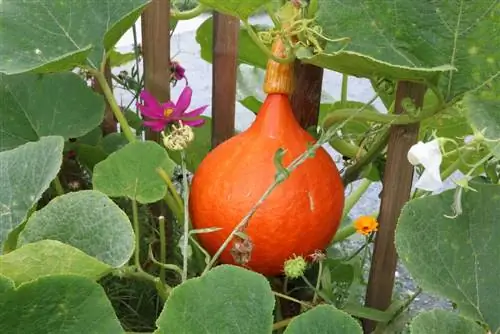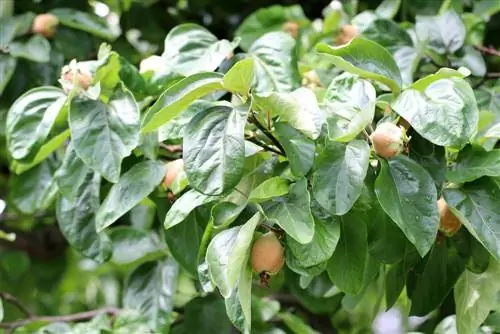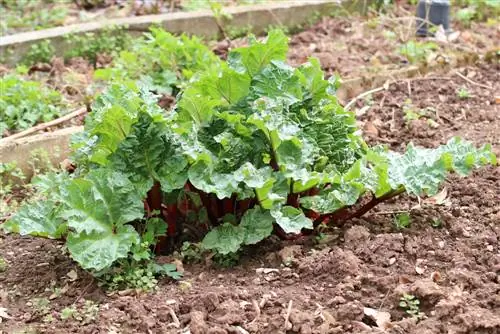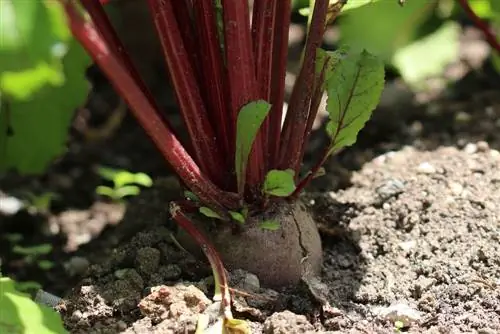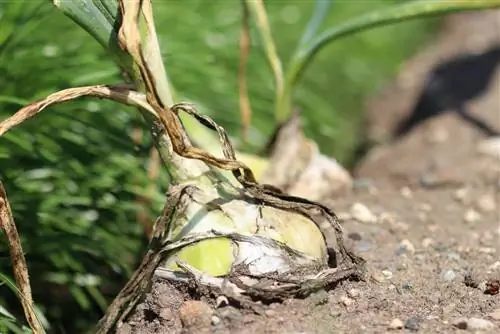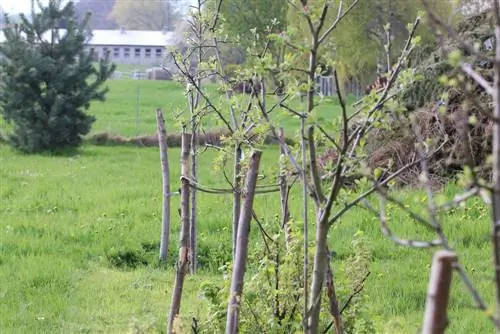- Author admin [email protected].
- Public 2023-12-17 03:39.
- Last modified 2025-01-24 12:45.
Decorative, easy to care for and with a very unique taste - the Hokkaido pumpkin is one of the most popular plants of its kind in this country. The slightly nutty nuance of the tender flesh is reminiscent of chestnuts and will also impress even die-hard pumpkin gourmets. At the same time, this pumpkin is a rather smaller variety, which is therefore also suitable for households with limited garden space. But if you want to enjoy the delicious plant, you should know exactly when the pumpkin is best harvested.
Importance of harvest time
The correct harvest time is particularly important for the Hokkaido pumpkin; because it is a variety that can generally be stored for several months. Many hobby gardeners take advantage of this advantage and grow considerable quantities of the he althy plant so that they can snack on the pumpkin during the cold season and into spring. However, the long shelf life is only guaranteed if the pumpkin is harvested at the right time and a suitable storage location is also selected.
Hokkaido pumpkin harvest months
The following months are suitable for harvesting the pumpkin:
- first harvest from the end of July to the beginning of August
- Main harvest between September and October
- Post-harvest in November
- No more harvest when there is frost
Due to the wide time range, the hobby gardener should take a close look at the environmental criteria in order to be able to determine the right harvest time for his individual plant. In addition to the time of sowing, the weather and color changes also play a role.
Harvest time depends on sowing and weather conditions
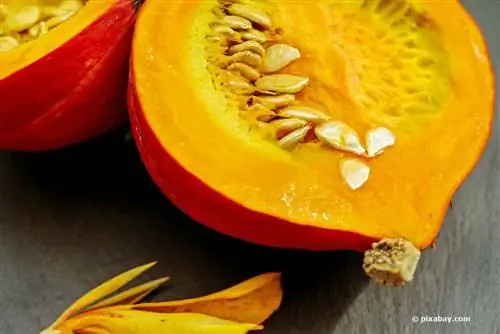
The time of sowing and the weather depend on each other when selecting the optimal time window to harvest the pumpkin. Early sowing promotes an early harvest - but only if the following summer offers favorable conditions for the growth of the pumpkin plants; the weather should be both very sunny and consistently warm. Then the first fruits can be harvested in August or even from the end of July.
However, the chance of being able to start harvesting in early summer decreases drastically if there are several late frosts during the planting year. Then even impatient gardeners should not be tempted to harvest early, as ripening is only possible to a limited extent. This applies to all winter squashes.
Immature harvest
However, in certain cases the pumpkin can also be harvested when it is unripe; For example, an early onset of bad weather means that the pumpkins spoil easily. The fruits cannot tolerate prolonged wetness or cold, so a combination of both factors has a particularly unfavorable effect on the growth of the fruits. As a result, the pumpkins gradually begin to rot. If the weather conditions are right, it is cheaper to start harvesting, even if the fruits are not yet completely ripe.
The pumpkins then ripen in a location that has the following properties:
- sufficient heat
- Drought is important
- do not store with other vegetables
Recognizing the optimal level of maturity
The optimal harvest time cannot only be determined based on the sowing date and taking into account the weather conditions; If you are a beginner in pumpkin growing and have little experience, you should also pay attention to external factors; The degree of ripeness of the pumpkins can also be recognized by their external characteristics.
The color of the pumpkin is particularly important. Especially with orange varieties, the right time can be recognized by the bright colors; the fruit is then covered in a strong orange tone. If you are not sure whether the optimal level of ripeness has already been reached, it is best to examine the pumpkin from all sides.
If the peel still has green spots, the pumpkin should be allowed to ripen for some time. The degree of ripeness of green varieties is naturally harder to recognize based on their color.
In addition, examining the plant stem provides information about the ripening of the fruit. When the time of harvest has come, it has the following properties:
- dry condition
- woody consistency
- brownish discoloration
- overall slightly dried condition
Tip:
In addition, the so-called knock test also provides valuable information about the degree of ripeness of the pumpkins. To do this, tap the pumpkin vigorously with the knuckle of your index finger; If the resulting noise is hollow and muffled, the pumpkin is ripe.
The Harvest of Hokkaido
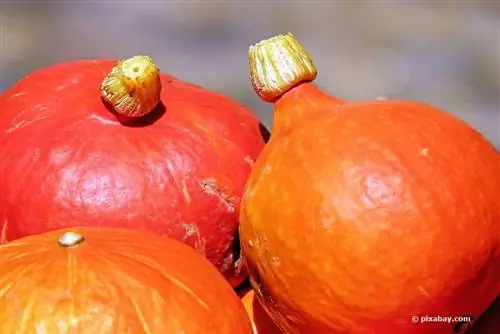
After the optimal time has been chosen, the pumpkin can be harvested. It has proven useful to cut off a sizeable piece of the stem; the length of the stem should be about one centimeter. It is important to ensure that this piece is as undamaged as possible. This is particularly important if the pumpkin is to be stored afterwards; A damaged stem can quickly cause the entire fruit to rot. To prevent this, a particularly sharp knife is used when cutting; Alternatively, you can also use sharp secateurs.
After cutting, the pumpkin is stored, which takes place in different ways depending on the level of ripeness. If the fruit had to be harvested when it was unripe due to poor weather conditions, it should be stored in a warm and dry place where the pumpkin will ripen. A cool and airy area, however, is useful if the pumpkins have already been harvested when they are ripe.
Note:
For ripe pumpkins, the maximum storage time is four months; After that, the quality of the fruit decreases drastically.
Whether unripe or ripe, whether in summer or late autumn - the correct harvest of the Hokaido pumpkin requires a little sensitivity. However, if you pay attention to the most important aspects of the optimal harvest time, you will then have a lot of fun with the delicious pumpkins.

